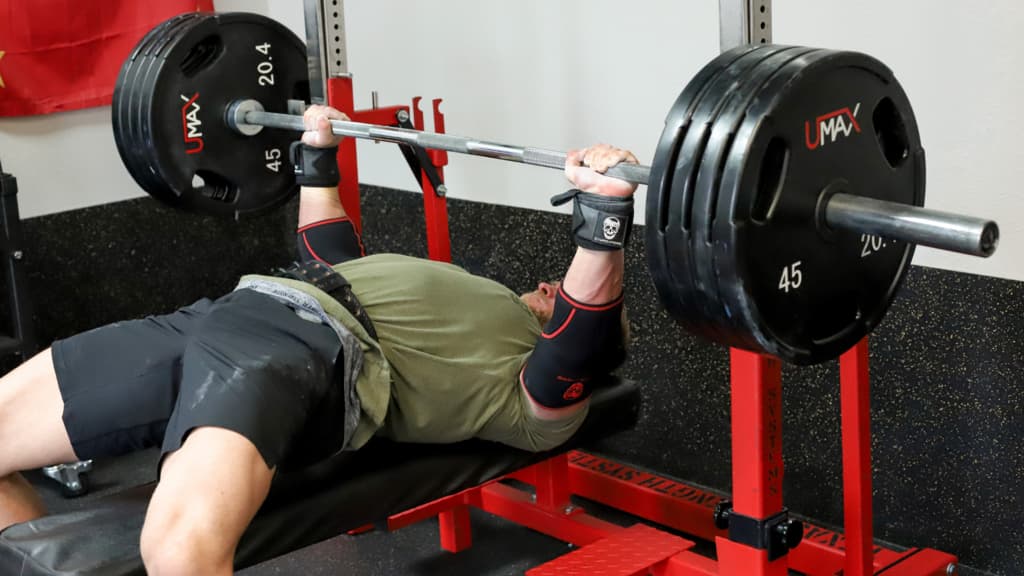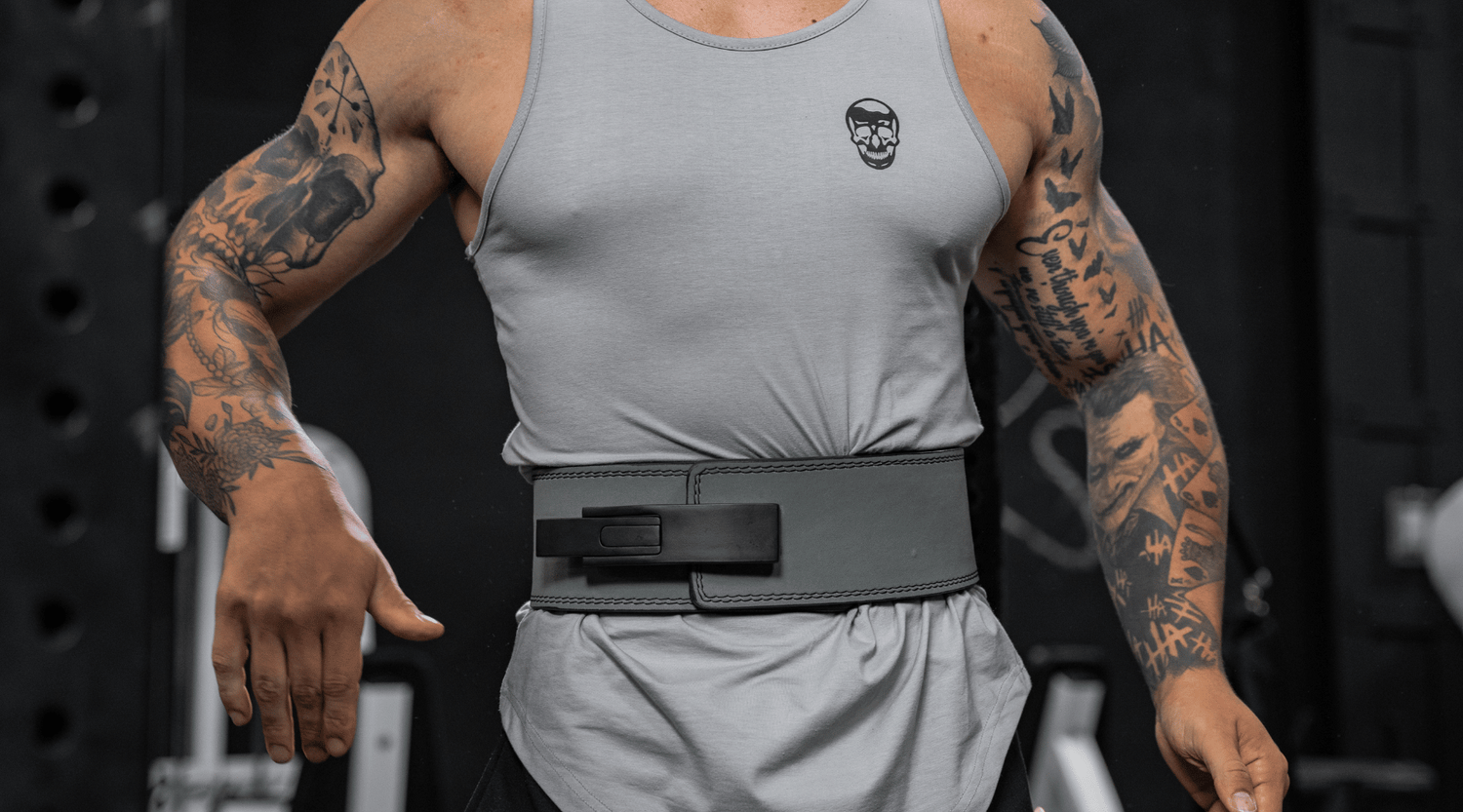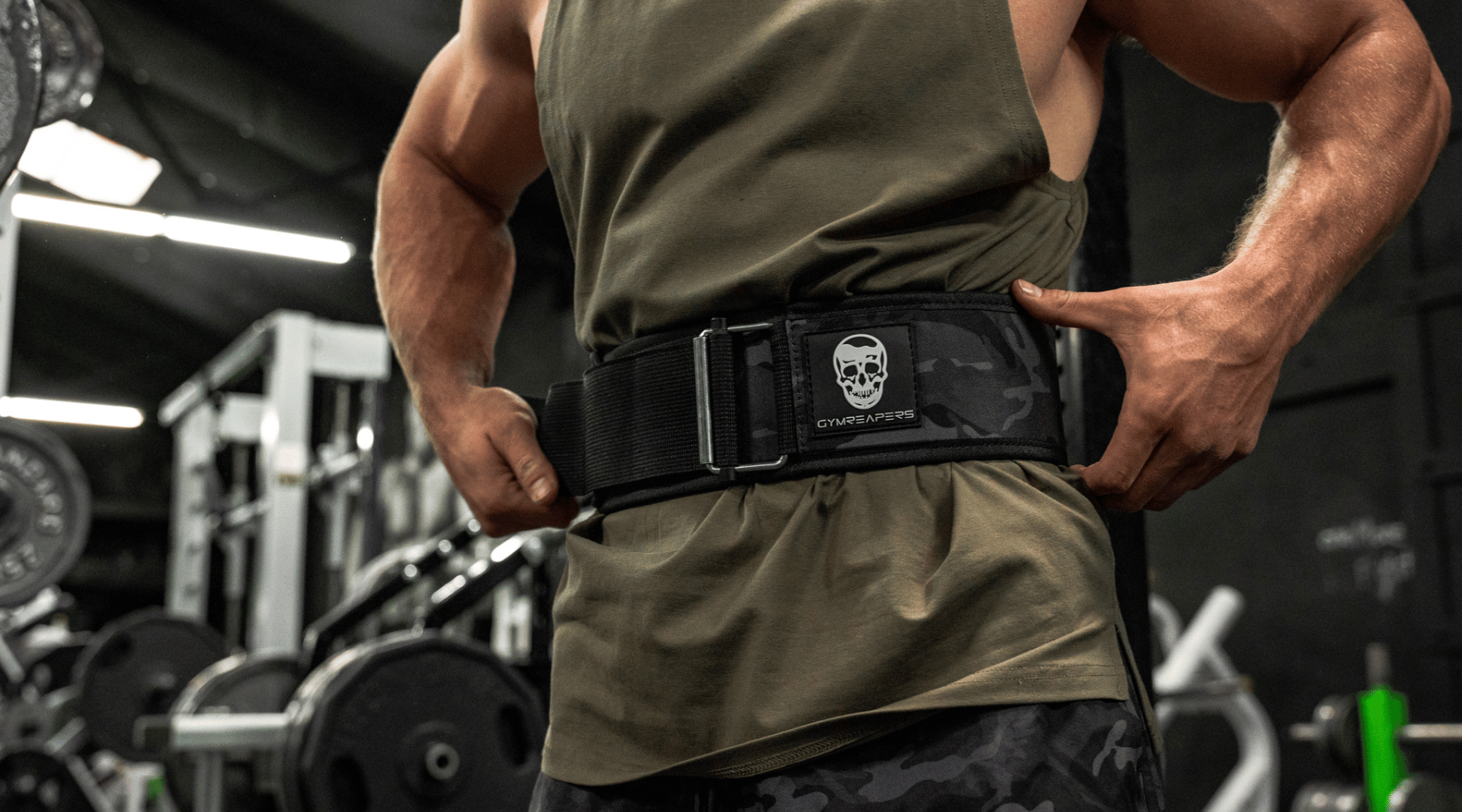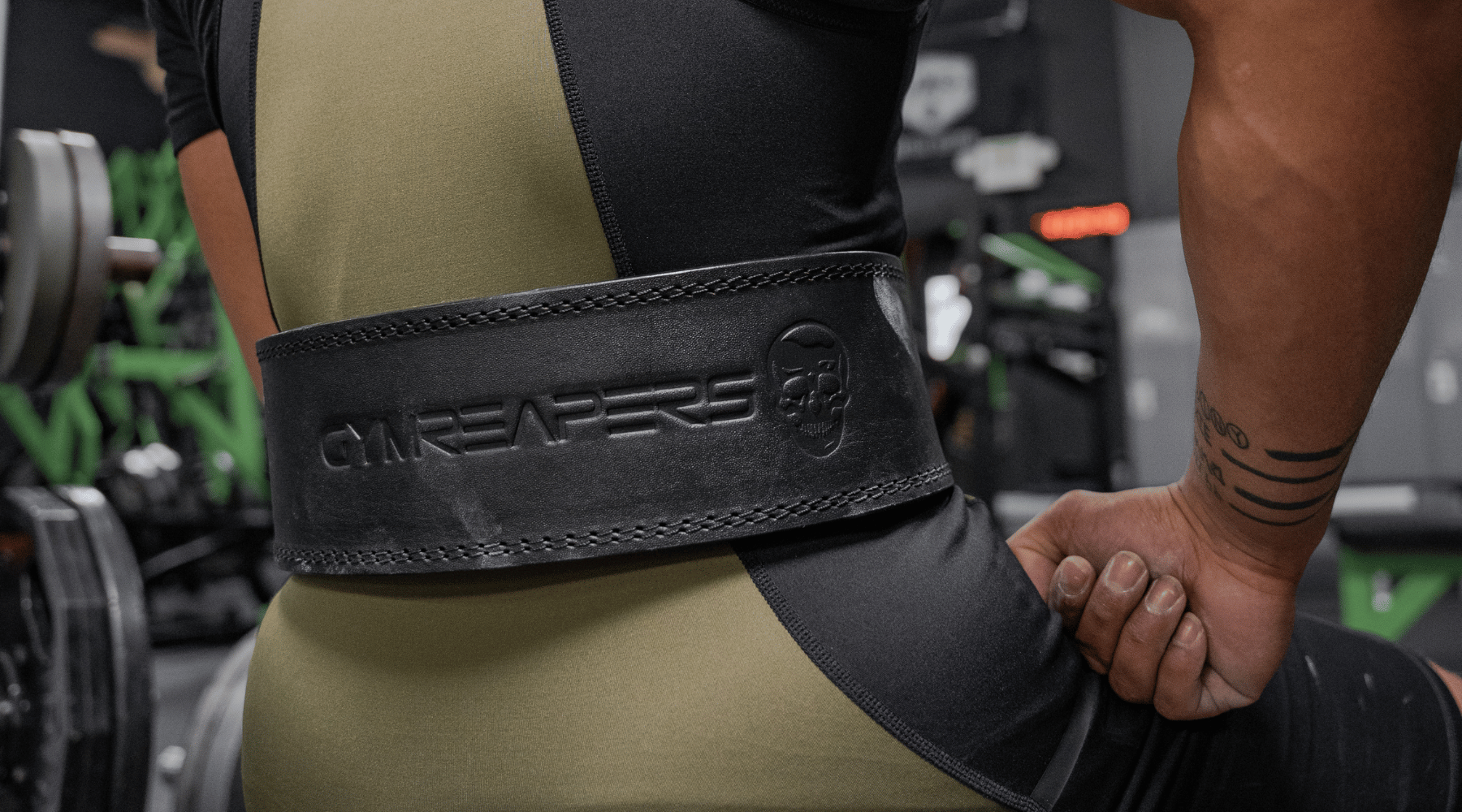Updated November 5, 2025
As a weightlifter with years of experience, I have guided numerous people in choosing the right equipment, and when to use that equipment to gain the most advantage.
A belt can be very useful for exercises such as the deadlift and squat because it aids with spinal stabilization.
However, a belt is not needed with movements like isolation exercises because spine involvement is minimal. If you desire to lift heavy with compound movements, lifting belts can be a great investment.
Let’s take a look at what other exercises do and do not require the use of a weightlifting belt, as well as a few reasons a belt may not be the best exercise equipment choice for you.
Key Takeaways
- A weightlifting belt helps stabilize the spine in a neutral position and reduces stress during heavy exercises (loads greater than 80% of 1RM).
- Weightlifting belts are ideal for deadlifts, squats, overhead presses, bench presses, and clean and jerks.
- Skip the weightlifting belt for exercises that directly target the core, cable movements, or any movement that involves a machine.
How To Know When To Use A Weightlifting Belt (3 Rules To Follow)

1. You Are Lifting More Than Your Bodyweight During an Exercise
You will find weightlifting belts beneficial if you frequently lift more than your body weight. However, lifting more than your body weight will depend on the type of exercise.
As an intermediate lifter, you should be able to deadlift and squat 1.5x your body weight, overhead press 0.75x your body weight, and bench press 1.25x your body weight.
If you’re not lifting more than your bodyweight, then it’s best to focus on improving your technique and stability with a specific exercise without a lifting belt. A belt will be more effective with efficient techniques and the right form.
2. You Have a Goal of Maximizing Muscle or Strength Gain
Everyone who embarks on a fitness or bodybuilding journey has a goal to achieve.
However, if your goal is to build a muscular frame or improve maximal strength, you should add the weight belt to your list of essentials.
Besides eating healthily, you must dive into heavy training and utilize different rep ranges to maximize muscle gains and strength.
If you're looking to build muscle and strength, using a weight belt will aid you in heavy training to lift more weight and perform more reps than what your body is capable of doing without.
3. You Wish to Reduce Your Risk of Back Injuries
Using a weight belt during exercise helps stabilize your spine and keep it in good posture. This reduces the risk of spinal injuries and relieves lower back pain.
This is a result of increasing intra-abdominal pressure (IAP) while lifting.
IAP is the amount of pressure that is consistently present within the abdominal cavity, allowing for greater levels of stability because it forces you to tighten your muscles. Results from a study on the effects of a belt on IAP suggest that:
"The use of a lifting belt increases IAP, which may reduce disc compressive force and improve lifting safety." —Everett Harman, PhD
The Best Exercises To Use A Lifting Belt
Below are some common exercises where lifting with a belt is highly advised. Keep in mind, though, this list is not exhaustive. Just remember the rules above, and apply them to any exercise that you want to do in the gym.
1. Deadlift

Lifting belts will help you deadlift more weight and maintain a neutral spine throughout the movement.
Lower back injuries are common during deadlifting because many people have improper form; this occurs when someone doesn’t rely enough on their lower body to get the barbell up off the ground and over-utilize their extensor muscles (low and mid back) for extra support.
With a belt, it is more difficult to accidentally round your lower back due to the pressure provided by its structure. This, in turn, can give you more confidence when going for your next big lift.
Check out the best weightlifting belts for deadlifts.
2. Squat

As studies show: weight belts support the core during squats, similar to deadlift exercises. According to research, this is particularly the case when lifting heavier weights because it helps you to maintain your posture and spinal rigidity throughout the entire movement.
This extra support and stabilization are essential because it helps keep your torso and hip position in the right angle.
Additionally, weight belts can help with a common mistake made during squatting called the buttwink.
The "buttwink" is when your hips tucks forward in the bottom of the squat movement, which looks like your lower back rounding, causing your spine to move out of its neutral (straight) position. This can compromise your lower back, especially under heavy weight.
One of the reasons why a buttwink can occur in the squat is because of a lack of core strength.
This issue can be minimized with the assistance of a weightlifting belt. However, at the same time as using a weightlifting belt, you’ll also want to integrate additional core exercises (i.e. planks, dead bugs, glute bridges).
Related Article: How Tight Should a Lifting Belt Be? (4 Rules to Follow)
3. Overhead Press

Weight belts are also a good tool to use in the overhead press, especially if you find yourself leaning back slightly.
While leaning back is not advised, as you want to stay as upright as possible, the use of a weightlifting belt can ensure your back is supported with any slight deviations from the optimal position.
Another added benefit of using a belt while overhead pressing is that it helps stabilize your oblique muscles (the muscles on the side of your stomach).
Why would this be important? Because your obliques interact with muscles that attach to your ribs and back (i.e. serratus anterior), which help keep your upper body stabilized during the overhead pressing motion.
"...the serratus anterior acts with the upper and lower fibers of the trapezius muscle to sustain upward rotation of the scapula, which allows for overhead lifting." —Kirsten Lung, MD
This means that your shoulder blades can be partially stabilized throughout the movement by ensuring that the muscles that wrap around your rib cage are engaged, which a lifting belt can help reinforce.
4. Clean and Jerk
For example, a lifter might catch a clean with their body weight more on their toes rather than on the mid-foot, which might cause their back and glutes to take on greater loading demand than normal.
A lifting belt, in these circumstances, can help you regain control of the movement if you find yourself having to make technique corrections mid-lift.
5. Bench Press

The weightlifting belt is not exclusive to exercises that require you to squat or stand. It also comes in handy in bench press exercises.
These weightlifting belts can help you maintain the bench press arch - a vital part of your bench press technique if you’re a powerlifter.
This means arching the back to create a space between the bench and your back. This positions the chest higher, allowing you to move the barbell over a shorter range of motion.
Additionally, when you have a slight arch in your back, you are able to squeeze your shoulder blades together and have a greater emphasis on loading your upper back (versus the smaller muscles in your shoulders). This, in turn, allows you to press more weight while minimizing injury risks.
Exercises To Avoid Wearing A Lifting Belt
I would avoid wearing a lifting belt for any exercise that falls into one of the following categories:
1. Abdominal Exercises
You should avoid wearing a belt during ab exercises because it has been shown to counteract the aim of the exercise in the first place.
When you are doing an abdominal exercise, whether it be something like a plank or leg lifts, the purpose is to strengthen the core muscles. Weightlifting belts help with the stabilization of the core, but you want to be doing all of that work on your own when doing ab exercises.
Belts can also get in the way of exercises like crunches and lessen your range of motion. This can also result in an excess of restricted blood flow. Abdominal exercises are much easier to perform when there is no weightlifting belt present.
2. Isolation Exercises
Weightlifting belts are unnecessary for isolation exercises because the need for spinal support is very minimal.
Isolation exercises are specific to only one muscle group and joint. Therefore, they differ from movements like the clean and jerk or overhead press that exercise more than one muscle group at a time, weigh heavily on the spine, and may require a weight belt.
For example, if you are doing a bicep curl, while you do want your core to stay strong to prevent you from swinging your body, the only muscle that is really being put to work is your bicep.
3. Machine Exercises
With machine exercises, you don’t need a belt because machines have inbuilt safety features to prevent injuries and protect the body form. Machine exercises involve the use of machines designed to help you exercise and achieve different body movements with ease.
There is no point in time when you should be put under or be carrying a heavy load that the machine cannot also support to help ensure your safety.
Also, more often than not, you are pressing your back against a seat that aids with helping you maintain a straight and supported spine, therefore preventing any lower back injuries from occurring that you would otherwise wear a belt for.
Related Article: 7 Types of Lifting Belts (Explaining the Pros, Cons, & Which is Best)
Can Wearing a Weightlifting Belt Lead to Any Problems?

Although weight belts offer excellent benefits, they have their downsides, especially when used incorrectly or solely dependent on by the athlete.
People who become too reliant on weight belts resort to using them to increase their ability to carry more weight without paying attention to their form.
This makes it hard for them to fully develop their core musculature. For this reason, lifting is more demanding when someone isn’t using a weight belt, and they are predisposed to injuries or back pain.
Using weight belts can aggravate acid reflux from the stomach, especially in people with esophagitis. This occurs due to increased pressure in the abdomen caused by the weight belt. The weight belt also acts like a tourniquet and disrupts flow within the digestive tract.
Additionally, a study reveals that the use of weightlifting belts significantly increased mean systolic blood pressure and heart rate during exercise. Therefore, using weight belts is detrimental to athletes who are hypertensive or prone to the condition.
Final Thoughts
In summary, a weightlifting belt is a valuable tool in strength training and overall fitness. A weightlifting belt gives you a better chance of achieving your exercise goals without the fear of any injuries. However, you must use it appropriately and in moderation to maximize its benefits.













Leave a comment
All comments are moderated before being published.
This site is protected by hCaptcha and the hCaptcha Privacy Policy and Terms of Service apply.